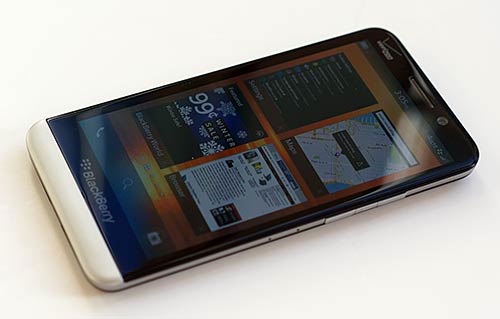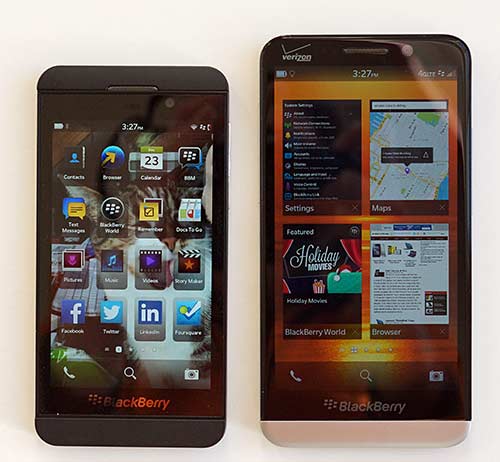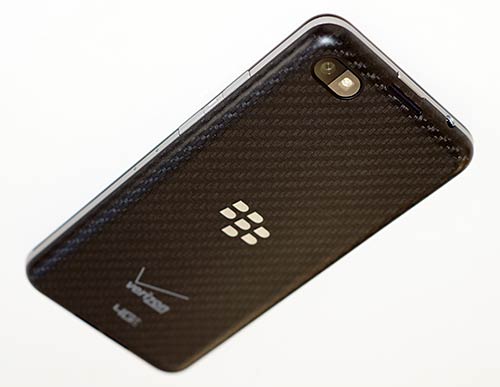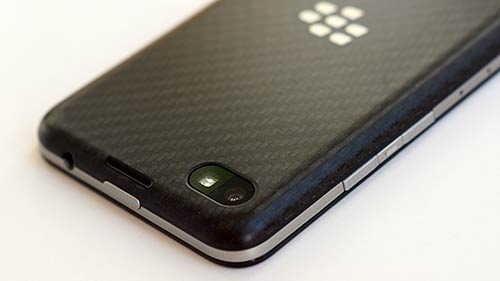Blackberry Z30 Review
13:01
Is the BlackBerry Z30 a big BlackBerry Z10? Yes and no. The 5 inch Z30 has a larger display, sure. It was the first device to ship with BlackBerry OS 10.2, but that playing field is now even and my Z10 runs that OS as well. The phones obviously run the same software, share gesture-based user interfaces, and have LTE 4G and robust security. So what's different about the BlackBerry Z30?
BlackBerry, formerly known as RIM, has made their best smartphone to date (unless you prefer hardware keyboards). While the Z10 was nice looking but a little plasticky and boring, the BlackBerry Z30 is cool looking and chic in a manly sort of way. The edge-to-edge glass with rounded corners, grippy but very attractive boy racer carbon fiber back and metal sides equal a great looking piece of hardware. It's not light at 6 ounces, but that helps it not feel cheap. Port selection and location is similar to the Z10, with the volume rocker and voice command button on the right and the micro USB and micro HDMI ports on the left side (not the bottom as on most smartphones). This is one of the few phones that still have a dedicated HDMI port rather than a combo USB/MHL port. The Z30 also supports Miracast wireless display.

This is also BlackBerry's fastest phone ever, but Android users won't be impressed since Android is a land of feeds and speeds where megahertz wins hearts quicker than honey attracts flies. The BlackBerry Z30 runs on a 1.7GHz Snapdragon S4 Pro dual core CPU with quad core Adreno graphics. It has 2 gigs of RAM and 16 gigs of internal storage (there's a microSD card slot to augment storage). Since the same manufacturer tunes the OS and hardware, we don't need massive computing power to have a quick experience, and the Z30 does feel faster than the Z10. Though there's no quad core killer CPU here, the S4 Pro makes for a pleasant and quick experience on the Z30.
The BlackBerry Z30 has 4G LTE, dual band WiFi 802.11n, Bluetooth 4.0, NFC, a GPS, front 2 megapixel camera and a rear 8 megapixel camera with LED flash. The phone has stereo speakers that fire from the bottom edge (along the curve, so they're not muffled by a desk). The speakers are fairly loud and clear, but they're not as full and rich as HTC's BoomSound stereo speakers on the HTC One.

The BlackBerry Z10 and BlackBerry Z30.
The software and BlackBerry OS 10, are largely unchanged from the Z10 (BlackBerry's first device to run that new OS). There are additions and improvements, notably in the Message Hub, which is our favorite among smartphones: it unifies text messages, notifications and emails in a very manageable way. It's a real time saver and intuitive. Other parts of the OS are highly reminiscent of webOS, complete with multi-tasking represented as a card metaphor and heavy use of gestures (some of which you won't remember even after a week of use). Overall, we really enjoy the operating system, but while some things are extremely intuitive, others will have you banging your head.

Lovely Display, Even if it's Not Full HD
Supremely high resolution displays with high pixel density are the rage for high end smartphones, but BlackBerry sticks with a 720p display that has 1280 x 720 resolution.
 That means you don't get any more pixels than the 4.2" BlackBerry Z10, but it's nonetheless a sharp looking Super AMOLED display with colors that pop, rich blacks and high contrast. At 295 PPI pixel density, the Z30 might sound less than sharp compared to the iPhone 5s (326 PPI) and Samsung Galaxy S4 (441 PPI), but in person you likely won't find it lacking. HD streaming video looks great (sorry, there's still no official BB10 Netflix app as of this writing) and photos appear vibrant. I can see a bit more fine detail in full HD panels like the Galaxy S4 and Nokia Lumia 1520 when viewing full HD content, so the Z30's display isn't top dog. That means you don't get any more pixels than the 4.2" BlackBerry Z10, but it's nonetheless a sharp looking Super AMOLED display with colors that pop, rich blacks and high contrast. At 295 PPI pixel density, the Z30 might sound less than sharp compared to the iPhone 5s (326 PPI) and Samsung Galaxy S4 (441 PPI), but in person you likely won't find it lacking. HD streaming video looks great (sorry, there's still no official BB10 Netflix app as of this writing) and photos appear vibrant. I can see a bit more fine detail in full HD panels like the Galaxy S4 and Nokia Lumia 1520 when viewing full HD content, so the Z30's display isn't top dog. |
Voice and Data
Oddly, I've seen reviews and comments from others stating that the BlackBerry Z30 has great voice quality or poor call quality. It's odd when reviews are so at odds, and it makes me wonder if this has to do with manufacturing lots or the phone working better on certain networks. Signal quality shouldn't be much of an issue thanks to BlackBerry's new Paratek antenna that tunes the frequency to maintain a good signal in poor environments. Our Verizon Wireless BlackBerry Z30 has mediocre voice that's not as clear as the better voice phones on the market. Voice also tends to sound digitized on both ends, even when calling from a quiet environment where the DSP shouldn't mangle voice to reject ambient noise. Calls are intelligible, but our call recipients and we had to work a bit more than average to catch each word.
Data speeds on Verizon's LTE 4G network are excellent, and the phone achieves download speeds that are comparable to the carrier's other phones in our area (Dallas). The phone has the usual mobile hotspot feature so you can use it as a high-speed wireless modem for your laptop or tablet.
Camera
On paper, the BlackBerry Z30 looks decent. It's an 8 megapixel camera with BSI, HDR, a fast f/2.2 lens and an LED flash. In good lighting, it takes lovely shots with pleasing colors and good contrast. In low light things fall apart and images look a bit murky. HDR should help with this, but the camera isn't the fastest, and we only made effective use of HDR with static subjects. Video capture likewise is quite good outdoors and indoors with abundant lighting, but low light means muddy video.

The front 2MP camera made for sharp video chats, with relatively low noise and good color saturation. The built-in mic worked fine as well, so we didn't have to resort to a headset for video chat and speakerphone conversations.
Battery Life
The Z30 is a big phone with room for a big 2880 mAh battery. Even better, the 720p display and dual core CPU don't impose big demands, so we had absolutely no trouble making it through a full day on a charge (8am to 10pm). BlackBerry Z10 owners will definitely notice the Z30's longer battery life.
|


0 comments